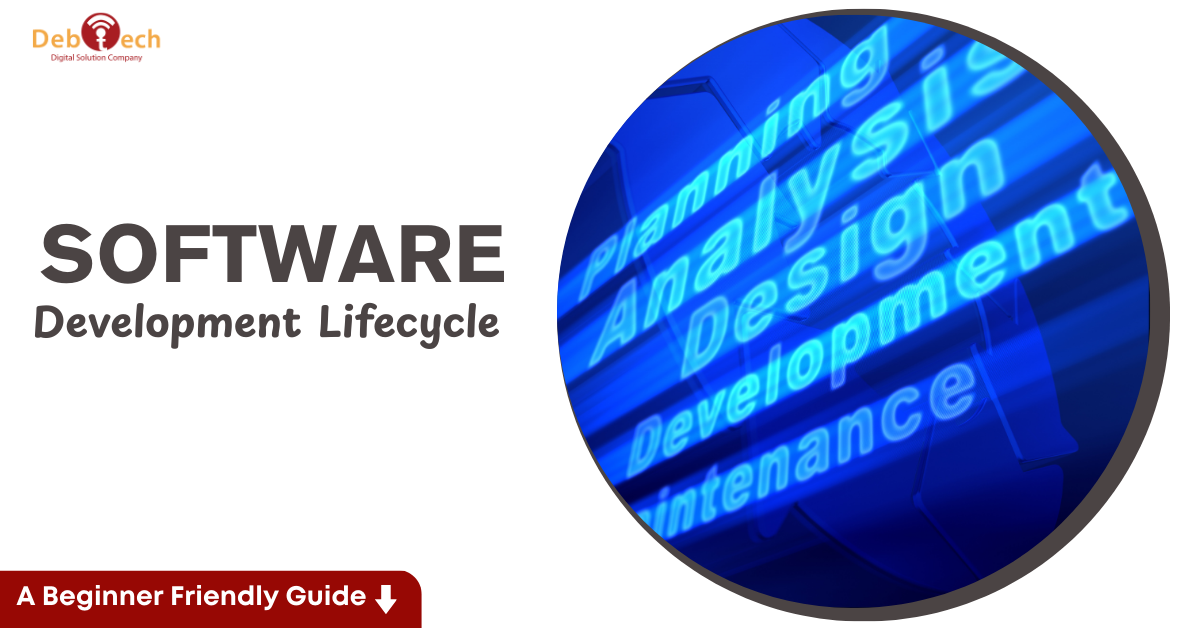Software Development Lifecycle Explained: A Beginner-Friendly Guide
Running a small business today often means relying on software—whether it’s a website, mobile app, or custom tool to streamline operations. But for many business owners, the software development process feels like a mysterious black box. Developers throw around terms like SDLC, Agile, waterfall, or staging environment, and you’re left wondering what it all means.
Here’s the truth: understanding the Software Development Lifecycle (SDLC) isn’t just for programmers. As a business owner, knowing how the process works helps you make smarter decisions, save money, and ensure your software actually solves the problem it’s meant to.
At Debtech LLC, we’ve helped many small businesses move from a simple idea to a fully functional digital product. In this guide, we’ll break down the SDLC step by step, share real-world experiences, and show you how to partner with a software development company effectively.
What Is the Software Development Lifecycle (SDLC)?
The Software Development Lifecycle is the structured process that software developers follow to design, build, test, and maintain applications. Think of it as a roadmap that ensures every part of the project—from the first brainstorming session to the final product—is carefully planned and executed.
For small businesses, SDLC matters because:
- It reduces wasted time and money.
- It keeps your project aligned with your goals.
- It ensures quality and security.
- It makes communication with your software development company smoother.
In short, SDLC is the bridge between your business vision and a working digital solution.
The 7 Stages of the Software Development Lifecycle
Every project is different, but most follow seven core stages.
1. Planning and Requirement Gathering
This is where everything starts. Business owners share their ideas, goals, and challenges. The product owner from the development team then translates those into clear project requirements.
At Debtech LLC, we often ask clients: What problems are you facing, and how will this software solve them? Who are you solving it for? The clearer the answer, the better the foundation.
Personal Note: When we worked with a local fitness studio, the owner initially said she wanted “an app like Peloton.” After digging deeper, we learned her real need was a booking system with video-on-demand classes. Proper planning saved her thousands of dollars.
2. System Design
Once the requirements are locked in and approved, developers create the blueprint, which includes system architecture, database design, and UI/UX mockups.
For small businesses, this stage is exciting because you get your first glimpse of the product’s look and feel.
3. Development
This is where coding begins. Developers use programming languages, frameworks, and tools to build the actual product. Depending on the project, the approach may be:
- Custom Software Development (tailored solutions for unique needs)
- Web Development (business websites, e-commerce platforms, or apps)
- Mobile App Development (iOS, Android, or cross-platform)
For businesses, the key here is transparency. A good development partner should give you updates, demo versions, and clear communication throughout.
4. Testing
Before launch, every feature is tested. Bugs, errors, and security gaps are identified and fixed.
Types of testing include:
- Functional testing
- Performance testing
- Security testing
- User acceptance testing (UAT)
Personal Note: We once helped a restaurant launch an online ordering system. During testing, we caught a bug that would have sent duplicate orders to the kitchen. Fixing it early saved the business countless headaches on launch day.
5. Deployment
Once testing is complete, the software is rolled out. Depending on the scale, this might mean launching it for a small group first (beta testing) or going live for all users.
For small businesses, this stage is thrilling—you finally see your vision in action.
6. Maintenance and Updates
After launch, software requires ongoing support. Updates keep the system secure, add new features, and improve performance.
This is often overlooked, but it’s critical. A website or app isn’t “done” after launch—it’s a living asset that grows with your business.
7. Evaluation
Finally, performance is reviewed against the original goals. Did the software improve efficiency, generate sales, or enhance customer experience?
This stage helps refine future projects and ensures long-term ROI.
For most small businesses, Agile is the best fit because it allows flexibility, frequent updates, and faster time-to-market.
Important note: You should avoid these common mistakes
- Skipping proper planning. Jumping straight into coding without clarity leads to wasted budgets.
- Choosing the wrong partner. Not every software development company understands small business needs. Look for their previous clients and their testimonials.
- Ignoring maintenance. A neglected app or website becomes outdated fast.
- Chasing trends. Building flashy features without aligning them with business goals.
FAQs About the Software Development Lifecycle
1. How long does software development take?
It depends on the project. A simple business website may take 4–6 weeks, while custom software could take months.
2. Is custom software development expensive?
Not always. While it costs more upfront, it can save money long-term by automating tasks and improving efficiency.
3. Do small businesses really need SDLC?
Yes—following a structured process ensures your investment delivers results instead of surprises.
4. Which SDLC model is best for startups?
Agile is usually the best fit because it’s flexible, budget-friendly, and allows faster delivery.
Final Thoughts: Turning Ideas Into Digital Success
The Software Development Lifecycle isn’t just a technical concept—it’s a roadmap that helps small businesses transform ideas into reliable, scalable, and profitable digital products.
At Debtech LLC, we’ve guided countless entrepreneurs through this journey—helping them avoid pitfalls, maximize budgets, and launch products that truly serve their customers.
Ready to bring your idea to life?
Contact Debtech LLC today and let’s turn your vision into a custom software solution that grows with your business.
